#new france
Explore tagged Tumblr posts
Text





22 notes
·
View notes
Text
"Between 1672 and 1681, no fewer than seven regulations of royal origin, plus twenty more of local origin, were issued in an attempt to rein in the coureurs de bois. They were backed up by threats of death, whipping, galley slavery, fines, and confiscation, yet their only effect was to exacerbate the phenomenon. The denunciatory fever running through the administrative correspondence culminated in 1679–80 with Intendant Jacques Duchesneau’s accusation that the governor preferred to ship pelts to the English, coupled with his assertion that 800 Frenchmen had lived in the woods for years while their lands, cattle, and wives had been left to fend for themselves.11 The creation of a system of licences covering voyages to the west, along with an amnesty for violators, decriminalized the interior fur trade and helped to impose discipline on the voyageurs. Moreover, Duchesneau’s recall in 1682 helped to restore a sense of proportion to the administration – for in actual fact, there had never been 800 or even 600 colonists in the Great Lakes region, the colony’s farmland was being steadily planted, its livestock were multiplying, and women were having children with their husbands. But the number matters less than the characteristics ascribed to the men designated as coureurs de bois. The phrase first appeared in the official texts in 1672 as a catchall for all sorts of individuals: former engagés of no fixed address; criminals who took advantage of the Indigenous people; young Montrealers who intercepted furs bound for the fairs…
…
What strikes the reader of the correspondence from these years is the scarcity of specific references to the colonial forces that were, in principle, there to signify the power of the king’s arms to the Indigenous peoples. In 1667, Intendant Jean Talon wrote that the peoples of Canada, being “naturally warlike,” would quickly form a nursery of soldiers capable of defending both the southern and northern colonies of the Americas. But after the royal instructions of 1669 to form the habitants into companies and prepare them for war, the administration tended to avoid the subject. The governors’ loud calls for deployment of regulars were tantamount to an admission that they did not trust the colonists; being personally responsible for their military training, however, it would have been bad form to stress the point. Instead, they wrote of the habitants’ negligence in obtaining guns, thus diverting attention away from more fundamental problems, such as the lack of officers in the côtes to train soldiers. When Frontenac wrote in 1673 that he had “begun” to raise a colonial militia in anticipation of a Dutch attack on Quebec, one might have expected a pointed reaction from Versailles: Why had the militarization program been delayed so long?
....
….the militia still accounted for only one part of the colonial armies, which also included the regulars, the domiciliés and Indigenous allies, and sometimes, as in 1687, a battalion of volunteers from the Great Lakes region. The 142 soldiers who took part in the expedition of 1684 and the 843 enumerated in the army of 1687 had just arrived in the colony. Having been recruited in the weeks and months preceding embarkation, they possessed little more military experience than the majority of the colonists. For both groups, the voyage into Iroquois territory proved a nightmare. Very few, most certainly not including the Quebec militiamen, knew how to steer a canoe through rapids; they came in for constant dunkings as a result of their clumsiness, caught fevers, and lost guns and supplies whenever their boats capsized. The losses were so great that the general staff became accustomed to entrusting the king’s supplies to experienced, well-paid canoeists. Transportation between Montreal, Fort Frontenac, and the other Great Lakes forts accounted for a large share of the extraordinary expenses incurred by the colonial wars. Another consequence of this practice was to deprive the militia of its most capable men, the ones from Montreal and environs, who would always arrange to be exempted in order to work on the convoys. To avoid drowning, inept canoeists stayed close to the forested bank where the enemy might well lie in ambush. Fear set in as soon as Lake St Louis was crossed. The campaign of 1684 was marred by an illness that put half the militia out of commission and killed eighty, as well as by a shortage of provisions, and both of these eventualities were to recur."
- Louise Dechêne, People, State and War under the French Regime in Canada. Edition prepared by Hélène Paré, Sylvie Dépatie, Catherine Desbarats, and Thomas Wien. Translated by Peter Feldstein. (Kingston and Montreal: McGill-Queen’s University Press, 2021) p. 60-62, 67.
#habitants#coureurs de bois#new france#french colonial empire#military colonization#settler colonialism in canada#montreal#canadien militia#early modern state#absolutism#reading 2024
4 notes
·
View notes
Text
Acadian miku. I'm gonna be honest I haven't been to Maine since I was 3 I do not remember anything about the culture. Genuinely considering going to Maine maritime academy just so I can be closer to where my dad grew up and actually learn something about my roots other than reading acadian history wikipedia and learning about nothing but how the British suck ass
Anyway fun fact my families ancestors only avoided the mass deportation by fucking off into the woods until the brits left. Also I found my pèpé's obituary the other day and it's very surreal to see the face of someone who died when you were in kindergarten
Oh and my mèmé, going off of old wives tales, kept telling my mom I'd be a boy since she was carrying high (that's an understatement I was all up in her ribs i was a menace as a fetusbaby), and my parents kept telling her "No, we got the tests done, the baby is female." But she was adamant that no, she was carrying me high. I was gonna be a boy. And like half a decade after she died, I (socially) transitioned and if heaven is real she's probably laughing her ass off about it.
Also my pèpé didn't know about segregation until he went to Florida despite being born in like 1930 or something
This started off as the "draw miku as part of your culture" meme but it devolved into me talking about my French grandparents who I have no memory of but many weird stories
9 notes
·
View notes
Text
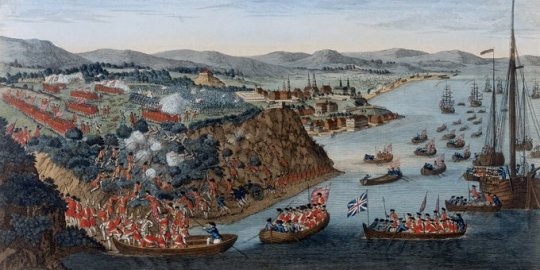
The Battle of Quebec on 27 June 1759 changed the face of North America forever. The future of Canada changed hands in one hour.
#The Battle of Quebec#Plains of Abraham#General James Wolfe#Royal Navy#General Montcalm#New France#Seven Years War#British Empire#St Lawrence River#On this day#27 June 1759
63 notes
·
View notes
Text
Notes of an explorer that settled in the New World:
They have this sort of ''pocket'' on each cheek, that allows them to stretch their mouth rather big. Big enough to swallow a whole human forearm (Not that they usually hunt humans). They also have sharp, claw-like nails that can dig through flesh…Although not as strong as their maws or fangs, these come in handy, when feeding young nagas. They dig through the carcass with their claws to then snatch away the tender parts inside, like the liver of the animal, giving to their offsprings that cannot hunt, yet. But their most lethal weapon is their powerful tail that can easily snap a neck. Thus, when two nagas fight, their quickly wrap each other's tails to prevent an easy kill. But they still have to wrestle away the sharp claws from their necks.
Nagas are viviparous, mostly. It means that they give birth, like humans. But perhaps, there are some species of nagas more akin to garter snakes. And thus, smaller and oviparous. So far, I have observed two types of naga dens. The first one is almost like a village of nomadic nagas. They settle in one place, for as long as there's game (mammals to hunt) or as long as they are undisturbed by humans (like a den settling near a bovine/dairy farm and not getting caught by hunters). They seem to have customs, a chef, and each young naga is paired with a ''mentor'', another naga chosen to be their teacher and companion to learn how to survive. Naga and mentor only part when the naga is considered ''of age'' and thus, not in need of a mentor, anymore or when they ''marry'' another naga. That kind of den seems to have a language of some sort, like humans, thus the capacity for civilisation. Such a shame Father Abraham considers them the spawn of Satan. We had to relocate twice because of the presence of nagas in the area. At least the indians seems to respect and mostly leave those creatures alone.
The second type of den is different. Only the young nagas, their parents and elder nagas may stay in that group. When a naga comes of age, they must leave the group, live on its own and only return to the ''village'' at the Mating Season, usually in Spring.
#fiction#my fiction#notes of an explorer#explorer#new france#america#christianity#nagas#notes on nagas#fantasy#in universe#diary of an explorer#diary#scientific notes#discoveries#set in the 1600s#1600s#roughly#naga#lamias#lamia#annaberunoyume#my art#my story#original story
8 notes
·
View notes
Text
In the 1750s, tensions between the British, the French, and Indigenous peoples over control of the Ohio Country in North America lead to the outbreak of a global war.
Full transcript
The French Canadian officer lay wounded in the Pennsylvania glen that in time would bear his name. The ground was still wet – it had rained all through the night – and his men had barely begun to cook their breakfast when the shots rang out. Perhaps he could still smell smoke from their campfires. Surely, he could smell gunpowder. Ensign Joseph Coulon de Jumonville was thirty-five years old on this, his last morning. It was May 28, 1754. Five days earlier, Jumonville had left Fort Duquesne, built at the Forks of the Ohio River near what is now Pittsburgh, and headed southeast with 35 mostly French-Canadian men. He carried a message for the commander of a Virginia regiment that he knew was nearby. The British and their colonists were to leave the area immediately, the message read. They were intruders in the colony of New France, and these lands belonged to His Most Christian Majesty, Louis XV.
#american history#north american history#Tanaghrisson#New France#Seven Years War#French and Indian War#Mingo
3 notes
·
View notes
Text
y'all I actually found media for War Crimes The War: Redcoat Edition and it isn't Last of the Mohicans adaptation. Probably still super fucking eurocentric but its something!
3 notes
·
View notes
Text
Flag of the Kingdom of New France
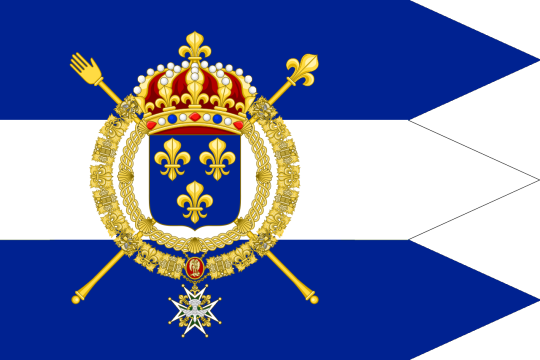
This is the Flag of the Kingdom of New France. It comes from a world where France actually put effort into colonizing the New World. The French government provided monetary incentives for families to settle in France's North American holdings. The thinking was that this investment would eventually be paid back by production of goods from the colonies. Families were given priority because of their importance to sustaining the colonies in the long term. France frequently got involved in boarder scuffles with the British, and this, among other reasons, led to something of an alternate French and Indian War.
Britain gained the Ohio River Valley, and a few other small bits of land, but New France survived the war more or less intact.�� During the war, the British also managed to capture Cuba. Cuba provided raw materials for Britain's North American colonies which, along with the fact that they were hemmed in by the Mississippi River, meant that the colonies stayed loyal to Britain. Thus, there was no American Revolution in this world.
The same, however, could not be said of the French Revolution. France's colonies had help relieve the pressure on its citizens a bit, but overtaxation, combined with a bad harvest, ensured that the revolution came to pass. However, when it became apparent the revolutionaries were going to gain the upper hand, the French monarchy fled to New France.
Originally, this government-in-exile was known as France-d'outre-mer. However, when it became apparent that retaking European France was unfeasible, the monarchy declared New France independent from France. Thus, the Kingdom of New France was founded. Eventually, things calmed down in Europe, but France remained staunchly republican.
New France is an economic and cultural powerhouse of North America. Over the years, it has to cede some of its southern territories to the Dominion of North America, but these days the two are on friendly terms with each other. The two nations compete with one another for immigrants from around the world. People of all races are given protection under the law of New France. Recently, a First Nations man was elected governor of the province of Canada. New France has been trying to convince nations, such as the Empire of Mexico and the Empire of Brazil, to create a league of New World monarchies.
The flag has as three-tailed banner design and feature blue and white, traditional colors of New France. An enlarged royal seal is displayed prominently on the flag.
Link to the original flag on my blog: https://drakoniandgriffalco.blogspot.com/2018/02/flag-of-kingdom-of-new-france.html?m=0
#alternate history#alternate history flag#alternate history flags#flag#flags#New France#Kingdom of New France#Canada#vexillology#french canadian#French Canada#quebec#France
2 notes
·
View notes
Text
HEY GUYS!!
GUYS!!!
FRANCE HAS REACHED THE REQUIRED NUMBER OF SIGNATURES ON THE CITIZEN'S INITIATIVE AGAINST CONVERSION THERAPY IN THE EU!!

ONE COUNTRY DOWN, SIX TO GO!!
We also need still quite a few signatures in order to reach the one million required.
As to date, the six other countries with the most signatures are:
Spain - 38.72%
Finland - 30.31%
Ireland - 24.86%
Netherlands - 24.15%
Germany - 23.54%
Belgium - 23.09%
So yeah, still a long way to go, but we ARE slowly getting closer. Don't stop now! Don't let this stay within the community, either, if you have any friends or family who are open to queer rights, get them to sign, too!
#good news#politics#EU politics#queer rights#human rights#lgbt rights#anti-conversion therapy#France#And I'll just tag the other countries mentioned in the post too#Spain#Finland#Ireland#Netherlands#Germany#Belgium
54K notes
·
View notes
Text
Key Figures Who Shaped New France
Key Figures of New France: Shaping a Colony New France, the French colonial territory in North America from the early 16th century to 1763, was shaped by a number of key figures who influenced its development, governance, and legacy. These individuals played significant roles in exploration, administration, and the fur trade, leaving an indelible mark on the history of North America. Below, we…
1 note
·
View note
Text
Everyone here on Tumblr you know that the war in Gaza is over but for me the war is not over because when you see yourself living in a tent that does not protect you from the rain and cold or you see yourself unable to provide food for yourself and your family and you see your memories become a dream and you cannot do anything and you are confused this is the real war your donation makes a difference in my life
#Save the survivors in Gaza#artist on tumblr#the gaza strip#gaza solidarity#gaza strip#gaza#free gaza#gaza genocide#artists on tumblr#gazaunderattack#all eyes on palestine#free palestine#gaza gofundme#gaza ceasefire#my art#arcane#black and white#digital art#animals#justice for gaza#gaza news#save gaza#american politics#americana#american horror story#american gothic#american riviera orchard#france#saw franchise#new your city
9K notes
·
View notes
Text
"Let us begin with a consideration of the urban militias, whose prestige and tradition, inherited from the era of the franches compagnies, were not shared by the rural militias. Before the arrival of the naval regulars, the captains of Quebec, Trois-Rivières, and Montreal had been invited to participate in various consultative assemblies and even to sit on councils of war alongside the five staff officers when necessary to achieve quorum. When he travelled to Lake Ontario in June and July 1673, the governor went as far as to entrust the “command of the fort and city of Quebec, and of the surrounding habitations,” as well as of “all the habitants and militias to be found in the said expanse,” to Charles Legardeur de Tilly, who had been appointed “colonel of the first regiment of the militia of this colony” for the occasion.1 Even though the militias were not then formed into a regiment, the rank was flattering and was to endure. René- Louis Chartier de Lotbinière, councillor and lieutenant-general of the provost court, who succeeded Tilly, commanded the “Quebec regiment” in the campaign of 1684. The lieutenant of “the first company [compagnie colonelle] of the Quebec town militia” was a merchant, Antoine Gourdeau dit Beaulieu, who also took part in the 1684 expedition and no doubt the 1687 one as well. Paul Dupuy de Lisloye, an ensign from the Carignan regiment who had become special lieutenant to the provost court, served as a major in the two campaigns.
The officers of Trois-Rivières and Montreal also belonged to the local nobility, derived equally from commerce and law. The captain of the Montreal militia was for many years Charles Le Moyne, a rich merchant ennobled in 1668 for his success as an interpreter and as the governors’ principal negotiator with the Five Nations. He commanded his company in the expeditions of 1666 and again in that of 1684. His brother-in-law Michel Messier, a merchant of lesser stature, was a lieutenant in the 1670s. The bailiff of the seigneury, Jean-Baptiste Migeon de Branssat, replaced him in the following decade but did not participate in the 1684 campaign. … It seems clear that commissions in the urban militias stroked the vanity of the colony’s well-established families during this period. Those who could did not hesitate to accompany their men to war, confident that their services would be recognized. Yet in the early eighteenth century – suddenly and as if by mutual agreement – the nobles ceded these posts to the merchants, and from then on the honorific dimension of the institution took precedence over the military dimension. How can this turnabout be explained, other than as the result of a defensive reflex? The nobility sought to distance themselves from the militia so as not to afford any justification to those who might have wanted to confine them to it. They wanted to assert their right to military positions more firmly at a time when there was talk of their being deprived of them.
Nor did the nobles ever evince the same interest in leading the rural militias. Many of them did not live on their own land, and those who did took little interest in offering military training to their censitaires. The formation of officer-led militia companies began in 1673 with the looming threat of a Dutch attack. The first mentions of militia officers in the notarial records date from 1676, and the rarity of these references in subsequent years indicates that the institution had yet to be entrenched in all the côtes before the end of the century. Nevertheless, the social profile of these officers had already taken on what would be its characteristic eighteenth-century form: Most were pioneering peasants of the parish or merchants, while a few were owners of seigneuries and arrière-fiefs from the same social stratum. Most had no military experience. During the expeditions of 1684 and 1687, governors La Barre and Denonville called on erstwhile Carignan officers, and other nobles familiar with the profession of arms, to lead the habitants from the côtes to war. Two-thirds of them did not live in the same parish or seigneury as the men in their company.
…
Officers in the côtes were not, however, absent from the campaigns of the seventeenth century and as junior officers were entitled to recognition from the general staff; thus, for example, the troop review of 1684 includes the militia lieutenants’ names. Some, like the captain of the Côte-de-Beaupré, took their role as military leaders seriously. The account book of the Sainte-Anne church contains the following text: “Received, the sum of 40 [livres] from Sieur Noel Gaignon and other youths who accompanied him during the campaign of sixteen hundred ninety-six, after a solemn thanksgiving mass in honour of St. Anne, which they asked to be sung in this Church.”
These characteristics were already fading in importance. After the turn of the century, militia officers appear to have ceased to hold any rank during military operations. In wartime, they served as soldiers alongside all the other habitants under regular officers, cadets, and sometimes noncoms. Intendant Jacques Raudot, wishing to enhance the institution’s military character and the militia captains’ authority, proposed in 1707 that they be made sergeants and paid the salary commensurate with this rank. Like similar suggestions in later years, this one met with opposition from the regular officers and came to nothing. Deprived of their structural autonomy when the time came to go to war, these militias ceased to function as geographical formations and became an undifferentiated pool of recruits. Instead of departing and returning with Sieur Gaignon, the youths of Sainte-Anne-de-Beaupré would be scattered into various units of shifting dimensions, commanded by men they did not know. The genesis of this development was the decision to recruit officers for the franches compagnies in the colony itself."
- Louise Dechêne, People, State and War under the French Regime in Canada. Edition prepared by Hélène Paré, Sylvie Dépatie, Catherine Desbarats, and Thomas Wien. Translated by Peter Feldstein. (Kingston and Montreal: McGill-Queen’s University Press, 2021) p. 81-83
#habitants#french aristocracy#new france#french colonial empire#military colonization#canadien militia#early modern state#absolutism#reading 2024#military recruitment#conscription in canada#early modern society
1 note
·
View note
Text

#statue of liberty#france#french#politics#political#us politics#news#donald trump#president trump#american politics#elon musk#jd vance#law#america#us news#maga#president donald trump#make america great again#republicans#elon#republican#trump administration#democrats
7K notes
·
View notes
Text
The Tapestry of History, 5 - Oh! Canada …
Canada has just celebrated its 157th birthday as a nation. At least, most of its people did. It’s a significant achievement for a state whose early foreign observers, and even critics of its creation in the British “Motherland”, expected it to disintegrate in short order from internal dissension. Or, alternatively, to be swallowed like a tender, juicy offering to its powerful southern neighbour,…
0 notes
Text
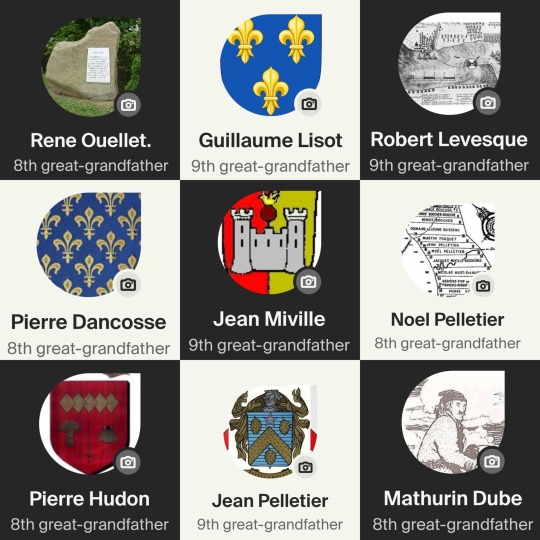
The Battle of Rivière-Ouelle
In 1690, Québec's Governor Frontenac sent ships to raid English settlements in New York and New England. British General Phips of Boston retaliated by sending ships to attack Acadia. Caught by surprise, Acadia was taken on May 21, 1690. Phips’ next target was Québec.
On his way up the St. Lawrence River, Phips decided to burn and loot villages, one such being Rivière-Ouelle.
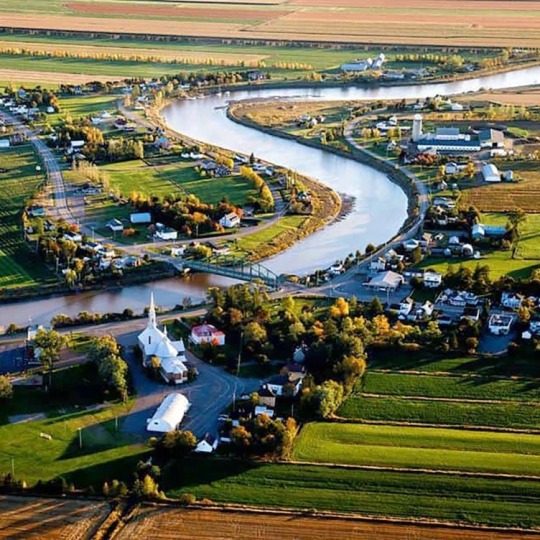
Rivière-Ouelle, and below, a map showing individual inhabitants listed by name.
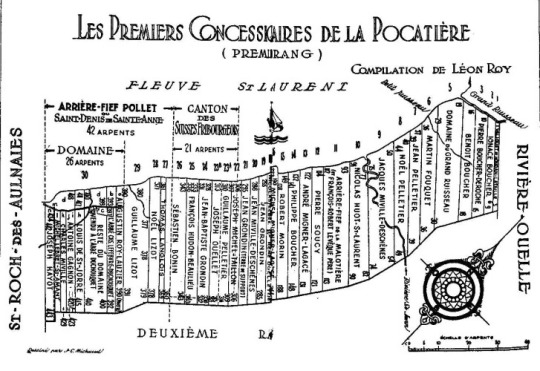
According to 19th century writer, H. R. Casgrain:
“One morning in the month of October 1690, a considerable detachment of Canadian settlers, armed for war, strode through the forest of spruce, fir and maple trees that still shade the edge of the River Ouelle.
The leader of the militia was none other than the parish priest, Father Francheville, a fifty-year old of fiery and impetuous character. "My friends," he told the men of the village earlier, "the news is about war. I just learned by letters from Québec, the English intend to seize the country to avenge the defeats we have inflicted upon them. It seems that a fleet of over 30 sails will soon appear. Already M. de Frontenac has sent detachments of militia to both sides of the river to prevent the enemy from making any landing. It must be believed that our governor is relying on your courage, since he sent none of his soldiers here. I would not recognize you were you to be so cowardly as to allow these Bostonian miscreats to land without firing a shot. You know what awaits you if you allow them to succeed: they will burn your houses, your church, desecrate what's holy as they have already done elsewhere, and they will drag everyone into captivity, you, your wives and children. Take arms and be ready for the first signal. "
Thus prepared, the inhabitants of Rivière-Ouelle opened fire when the British disembarked, killing and wounding many British and causing the remainder to retreat back to their ship. Similarly, Governor Frontenac, who was awaiting the British further up the St. Laurence, used forces to repell further attacks, destroying nine British ships in the process.
Some of the Canadians who successfully defended the small settlement of Rivière-Ouelle that day were:
Robert Lévesque
Pierre Hudon dit Beaulieu
Charles Miville
Jean Miville
Galleran Boucher and his two sons, Pierre and Philippe
Michel Bouchard and his three sons, Étienne, François and Pierre
Pierre Dancosse
Guillaume Lisot and his son, Claude
René Ouellet and four of his children, Abraham, Mathurin-René, Grégoire and Joseph
Jean Pelletier
Jean Lebel and his son, Jean-Baptiste
Pierre Emond
Mathurin Dubé
Jean Mignot dit Labrie
Noël Pelletier
Jean Gauvin and his son, Jean
Pierre de Saint-Pierre
Nicolas Durant and his son, Nicolas
François Autin
Sébastien Boivin
Jean de Lavoye
Sources:
#french canadian#genealogy#family history#canadian history#battle#quebec#warfare#ancestors#ancestry#family photos#nautical history#history#canada#saint lawrence#british history#american history#english history#french history#New France#family stories#family
0 notes
Text




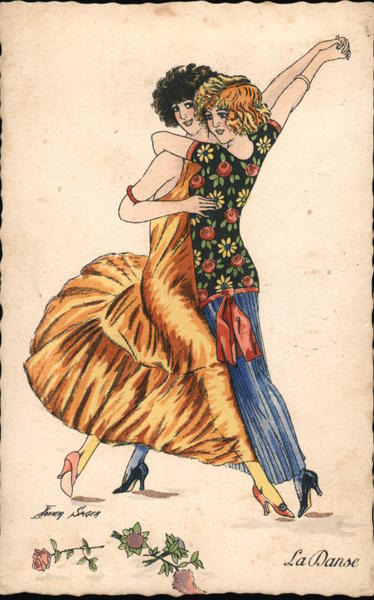

Lesbian Postcards illustrated by Xavier Sager (1870-1930)
#sorry i haven't been very active#i just got a new job#but i will be locked in again soon#lesbian#dykeposting#wlw#sapphic#lesbian history#lesbian art#lgbt history#lesbian ephemera#vintage postcards#postcard#xavier sager#1920s#france
5K notes
·
View notes